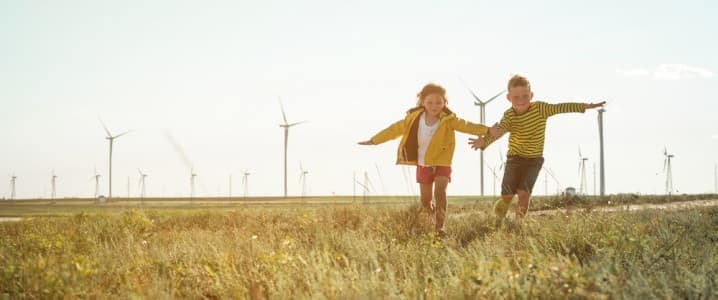
In late April the government unveiled plans that would give companies the opportunity to purchase the credits to offset their own carbon emissions.
The proposed deal is based on the Bahamas’ estimated 4270 sq km of mangrove forests, seagrass beds and other ecosystems that absorb and store significant amounts of carbon.
Upon announcing the initiative, Prime Minister Philip Davis said the Bahamas aimed to raise $300m to invest in efforts to maintain the country’s marine environment, as well as other renewable energy and green projects.
The nation has pledged to generate at least 30% of its energy from renewable sources by 2030, and is partnering with international institutions like the EU and the Inter-American Development Bank to roll out solar energy projects.
The importance of blue carbon
While green carbon credit projects that involve forests and grasslands are well established in global financial markets, the sale of blue carbon credits is still at an early stage. However, there are some signs that this may be beginning to change.
This shift comes as governments and companies alike are becoming more aware of the environmental potential of maritime ecosystems in combatting climate change.
Coastal ecosystems like mangroves, salt marshes and seagrass meadows have substantial carbon storage potential: not only can they store up to 10 times more carbon than land forests, but they can also hold carbon for 10 times longer than tropical forests.
Another initiative based on blue carbon credits is the Cispatá conservation project, located on Colombia’s Caribbean coast.
A collaboration between Colombia’s Marine and Coastal Research Institute, Conservation International and Apple, the project aims to conserve and restore 11,000 ha of mangrove forest. Those involved say the project will remove an estimated 1m tonnes of CO2 from the atmosphere over the course of its lifetime.
It is hoped that blue carbon credit sales will help to cover half of the project’s $600,000 in operating costs.
Meanwhile, in Japan, power company Electric Power Development, better known as J-POWER, has begun generating its own blue carbon credits by raising algae and a seagrass bed near its Kitakyushu plant.
The company does not plan to sell the credits but rather use them to offset carbon emissions from its power plants. By establishing seagrass beds around the country, J-POWER expects to absorb 100 tonnes of carbon per year.
There are a number of other blue carbon conservation projects taking place in emerging markets around the world, including Kenya, Senegal, Madagascar, India and Pakistan, the last of which is home to the world’s largest mangrove restoration project, spanning an estimated 350,000 ha.
Environment-linked financing in emerging markets
The expansion of blue carbon conservation and credit projects is another example of how emerging markets are increasingly looking to find innovative ways to fund environmental projects.
For example, in September last year the government of Belize launched a debt-for-nature swap to restructure its sole sovereign bond. Under the terms of the deal, Belize bought back its debt at a significant discount – $0.55 cents for every $1 – in exchange for increasing efforts to protect its marine environment.
Meanwhile, earlier this year the World Bank issued the world’s first wildlife conservation bond, raising money to protect endangered black rhino populations in South Africa.
The five-year, $150m “rhino bond” is an outcome-based financial instrument tied to the rate of population growth of black rhinos in South Africa’s Addo Elephant National Park and Great Fish River Nature Reserve, meaning that investors will receive a “success payment” if the population increases.
In a similar vein, Chile became the first country to issue bonds tied specifically to sustainability goals when it sold $2bn in US dollar-denominated sustainability-linked bonds (SLBs) in March.
In contrast to other types of green bonds that raise money to fund environmentally friendly developments such as solar and wind power projects, SLBs incentivise climate-positive solutions by incorporating environmental objectives, along with a series of penalties for issuers if they fail to meet their goals.
In Chile’s case, the bond stipulates that the country may emit no more than 95 tonnes of CO2 and equivalent by 2030, and that 60% of its electricity production should come from renewable sources by 2032.
Given the increasing focus on environmental, social and governance metrics in both the public and private sectors, the development of environment-based financing initiatives could set a precedent for emerging markets looking to raise funds in the future.